During our cycling the Loire Valley in France, we were looking forward to miles of smooth asphalt bike paths, but instead, we ended up navigating gravel paths alongside the Loire River. We had imagined enchanting vistas, yet we discovered more classic riverside views, unexpectedly enhanced by the presence of stunning castles and palaces. It was the sheer quantity, beauty, and variety of these historic structures that overshadowed our initial perceptions of the area. After all, the essence of the Loire Valley lies in France's rich history, its remarkable culture, art, and architecture, lending the region a touristic allure that places the Loire among the most captivating rivers to explore in Europe.
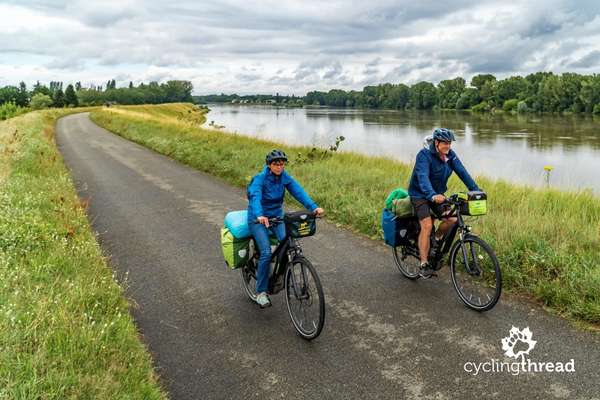
During our visit to France, we embarked on a bike journey through a portion of the Loire's central path, recognized as a UNESCO World Heritage Site in 2000. This esteemed and valuable stretch of the Loire Valley runs from Sully-sur-Loire near Orleans to Chalonnes-sur-Loire near Angers. To navigate this roughly 280-kilometer segment of the river, we traversed about 380 kilometers on the Loire à vélo, or "Loire by bike", trail. Starting from Sully-sur-Loire, our route took us through Orleans, Chambord, Blois, Amboise, Tours, Chinon, Saumur, and finally to Angers. On our journey back, we were aided by a special train designed for cyclists, a detail I'll delve into more at the article's conclusion.
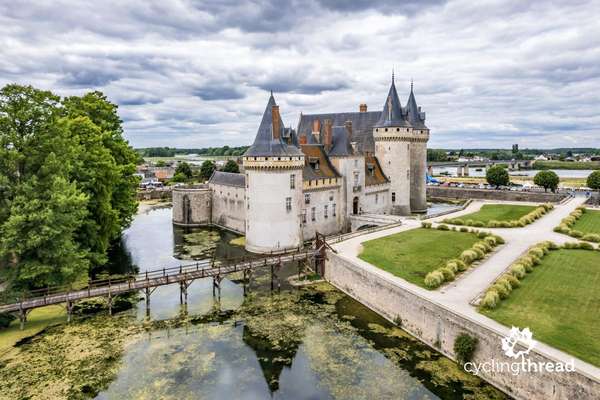
We selected the charming town of Sully-sur-Loire as the ideal launching point for our cycling adventure in the Loire Valley. The town's crown jewel is the modest yet stunning Château de Sully, a prime example of military-residential architecture from the 13th century. This moated castle captivates visitors with its historical depth and aesthetic appeal. Additionally, the town is home to a historic bridge spanning the Loire River, which links the town's two halves and enhances the scenic beauty of the area. Exploring the quaint streets lined with stone buildings and narrow alleys near the castle was an enchanting experience. Our evening walk through the historic heart of Sully-sur-Loire served as a delightful and symbolic beginning to our multi-day journey into the heart of the ancient Loire Valley.
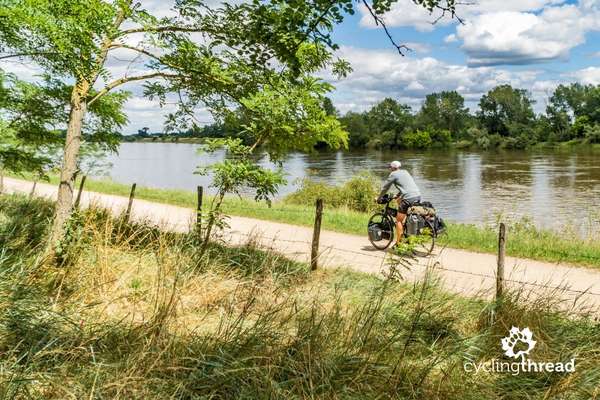
In the heart of Orleans, we were welcomed by the sight of large Ukrainian flags in yellow and blue, waving along Joan of Arc Avenue. It was here that I captured one of my favorite photographs of the journey, just as the sun broke through the clouds after a rainfall, illuminating the grand Sainte-Croix Cathedral of Orleans that marks the eastern end of the city's most renowned street. Standing at 88 meters tall, the cathedral's spires rank it among the top five tallest in France. The cathedral is tied to the tale of a victorious mass in 1429, attended by Joan of Arc following the lifting of the English siege on Orleans. However, the fact that the current structure's erection began in 1601 hints that the famous story actually relates to an earlier Romanesque church that once stood in its stead. The Sainte-Croix Cathedral we see today was only inaugurated in 1829, exactly four centuries after the Siege of Orleans. A notable point is that since World War II, neither of the cathedral's two towers has undergone renovation, rendering them off-limits to the public.

Upon our arrival that day, we settled into the welcoming Chaptal Hotel in Amboise for the night, which swiftly became recognized as one of the most bicycle-friendly accommodations we've encountered on our cycling tours across Europe. This distinction was largely due to its superbly organized bike room—a facility that not only offered secure bicycle storage but also included a workshop for bikes, a charging station for electric bikes, and even a dressing area alongside a rack for drying wet clothing. Furthermore, the bike room could be directly accessed from the street via its own entrance and a purpose-built ramp, enhancing convenience for cyclists. Emblematic of its dedication to cyclists, the hotel is a member of the Accueil Vélo network, a commitment prominently displayed by a plaque situated just below the state-issued hotel star rating sign.
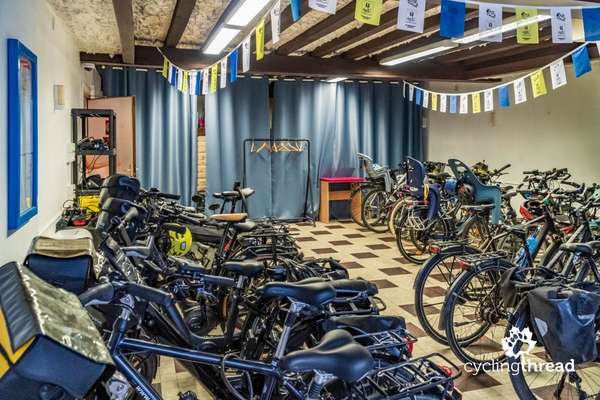
Even if just for the breathtaking views it offers of the city and river, Amboise Castle is a must-see destination. The opportunity to stroll through its meticulously kept, quaint garden adds to its allure. Our recollections of Amboise are further enriched by the quaint market we stumbled upon within the castle's courtyard. This market showcased local purveyors of jams, liqueurs, wines, and confections. Additionally, we had the unique experience of being interviewed by a French television crew, who were there capturing a segment on the revival of tourism following the hiatus caused by the pandemic. Not to forget, our leisurely evening walk the day before, meandering through the town's narrow lanes and along the riverfront promenade as the sun dipped below the horizon, was truly memorable. In essence, Amboise possesses all the qualities to be fondly remembered as one of the most notable towns and villages dotting the Loire Valley.

During a lovely dinner at the Au Local restaurant in Chinon, nestled right beside the castle tower, we were accompanied by one of the Loire's wines. The ambiance was perfect with the setting sun, the day's cycling efforts behind us, and the quiet chatter from neighboring tables on the terrace, occasionally punctuated by contented murmurs prompted by the exquisite flavors. The official route's website highlights local Loire delicacies, including the traditional Nantes almond cake flavored with rum, fouée (a type of pork ball served with a pâté-like filling), Tours' nougat cake, goat cheeses from the Loire Valley, the inverted apple tart known as tarte tatin, and the renowned mustards of Orleans, among others. France truly is a haven for food lovers, a fact that deserves a spot in any travel itinerary to the Loire Valley, where one might consider trading in some cycling miles for culinary delights.
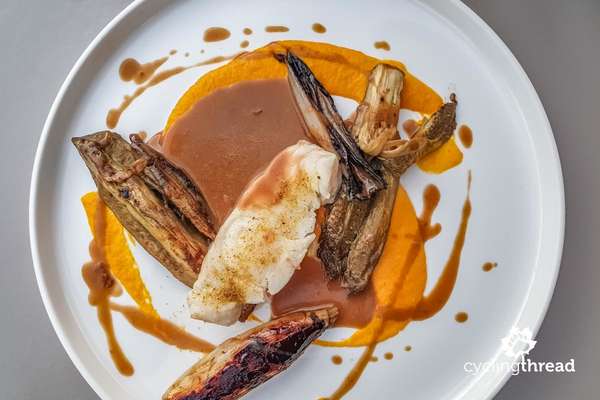
The culmination of our journey's cyclist-friendly experiences occurred as we prepared to return to our car in Orleans by train. A young woman, adorned in the SNCF (French National Railway Company) uniform, emerged from a train we had randomly approached. She kindly asked us to detach our bicycles and panniers, then personally guided our bikes to the dedicated compartment on the lower level of a regional double-decker train. After inquiring about our final stop, she skillfully arranged our bicycles in the special racks, ensuring they were in the correct sequence for our destination. We then proceeded to the upper deck, which was reserved for cyclists, to take our seats. Upon reaching Orleans, we collected our bicycles. It was only when disembarking that I noticed the La Loire à Vélo inscription on the train, prompting me to seek out further details about this thoughtful service later.
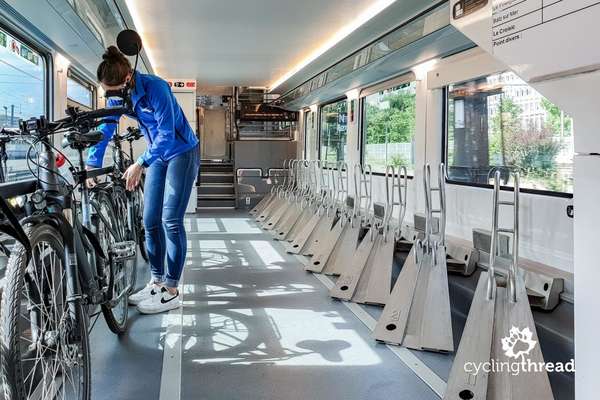
Our adventure in the Loire Valley was anything but disappointing. While the landscapes of the Loire might have seemed ordinary at first glance, they were completely outshined by the magnificent interiors of the palaces and castles we explored, as well as the exquisite culinary creations served by the region's restaurateurs. Rather than focusing solely on the quality of the cycling paths, I found myself continually impressed by the comprehensive amenities offered along the Loire à vélo cycle route. This included access to the French network of cyclist-friendly accommodations, clear signage along the route, and the exceptional train service catering specifically to cyclists. Our week-long exploration of the Loire Valley unfolded as a collection of delightful, unexpected discoveries in both travel and cycle-touring, elevating it to one of the top positions on our list of Europe's best cycling routes.
Check out my other articles on cycle.travel:
- Ciclovia Alpe-Adria - Austria & Italy
- Rhine Cycle Route in Switzerland


